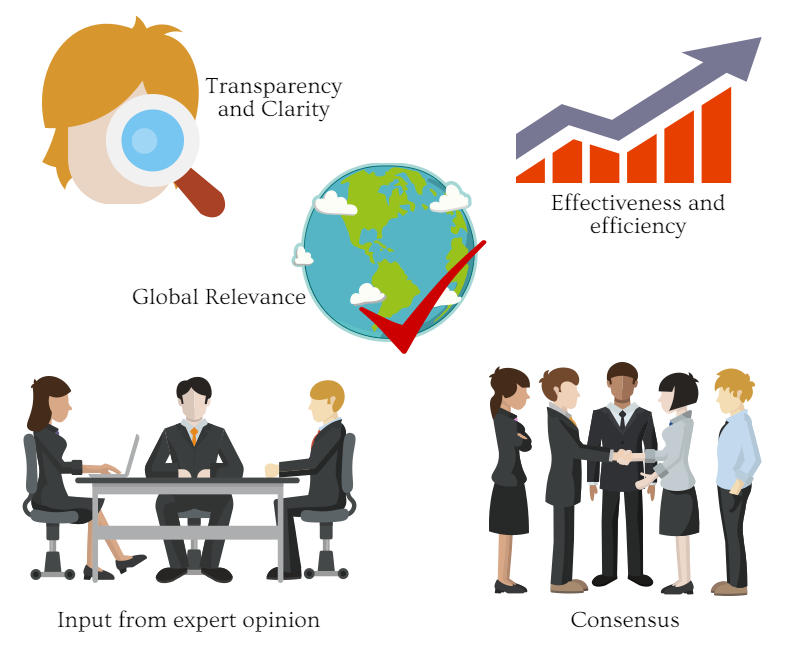The ISO standards in conjunction with the IEC (International Electrotechnical Commission) provide a boost to the public policy process as they assist governments and regulators achieve their goals. In doing so, these globally recognised standards provide confidence in technical specifications and safety requirements which help to implement policy commitments.
IEC General Secretary & CEO Frans Vreaswijk says:
“Many of today’s major challenges such as universal energy access, disaster mitigation and recovery or the need for smarter cities are global. International standards can help regulators to stimulate solutions that interoperate, are safer, more affordable and easier to maintain and repair.”
International standards and public policy have many shared objectives. Governments and regulators utilise both the international standards and public policy to achieve these objectives:
- Enhancing economic competitiveness
- Enhancing economic efficiency
- Facilitating international trade
Policy makers find international standards useful for the following reasons:
- ISO and IEC standards are consistent with the obligations of countries that are members of WTO (World Trade Organisation) to reduce technical barriers to trade.
- International standards offer a means of communication and co-operation across borders.
- The standards contribute to eliminating inefficiencies in trade, i.e. surprise costs, loss of economies of scale, information costs and conformity assessment costs.
- These standards provide detailed safety processes or performance requirements in the policy guidance or legislation without making it unnecessary long and complicating it with technical information.
- They reflect the globally agreed best practices and serve as a vehicle for the dissemination of new technologies and innovative practices.
- They are used for conformity assessments to enhance confidence in products, systems, processes, services or personnel.
- International standards are powerful instruments of governance:
- Private sector:
- Creation of market incentives for actors to follow internationally accepted practices by applying competitive pressure.
- Encouraging innovation and growth by fostering technological development.
- Public sector:
- Enables greater transparency.
- Competition in public procurement.
- Provides essential requirements for the industry via their referencing into regulations and laws.
Good policy making and standardisation practice have common characteristics which include:

Policy makers can benefit from using and referencing international standards whilst formalising public policy by ensuring reliability and encouraging trust between parties as established procedures are in place to avoid duplication and conflict while developing international standards. Furthermore, standards are only developed if there is an established and/or an international market need. Once developed they are subject to regulars reviews in order to keep them up-to-date. The development process of standards allows access to all relevant parties, permitting them to participate in the discussions and influence outcomes.
International standards are also helpful to policy makers and their main contractors in aligning their procurement systems with international best practices; making them fair, equitable, transparent, competitive and cost effective.
International standards support public policy in various industries:
- Energy management
- Environment management – climate change
- Food products
- Laboratory medicine
- Medical devices
- Railroads
- Road vehicles
- Ships and marine safety
- Transport of dangerous goods
Example: How the European Union uses standards
The European Union uses international standards to support both its legislation and policies. The primary use of international standards by the European Union is part of a co-regulatory model known as the ‘New Approach’ to technical harmonization which was updated and refined in the ‘New Legislative Framework’ in 2008. The European Commission requests the European Standardisation Organisations (ESOs), i.e. The European Committee for Standardisation (CEN), The European Committee for Electrotechnical Standardisation (CENELEC) and the European Telecommunications Standards Institute (ETSI) and their national member standards members to develop and adopt European standards, referred to as ‘harmonised standards’. This includes the EU-28, the EFTA members of the European Economic Area, the CEN and CENLEC. It is the policy of the ESOs to use international standards (e.g. ISO, IEC) wherever they exist and are suitable. Single standards bring the benefits of clarity and certainty for industry and enables easier reference in legislation. To this extent 32% of the CEN’s portfolio of harmonised standards are identical to ISO Standards. The pan-European consensus of all Member States’ standard bodies that is contained in European standards give them the legitimacy to be used for public policy purposes.
International standards do not seek to establish or motivate public policy, regulations, social or political agendas, however, they do provide valuable support to the implementation of public policy.
Sources
ISO: Using and Referencing ISO and IEC standards to support public policy


